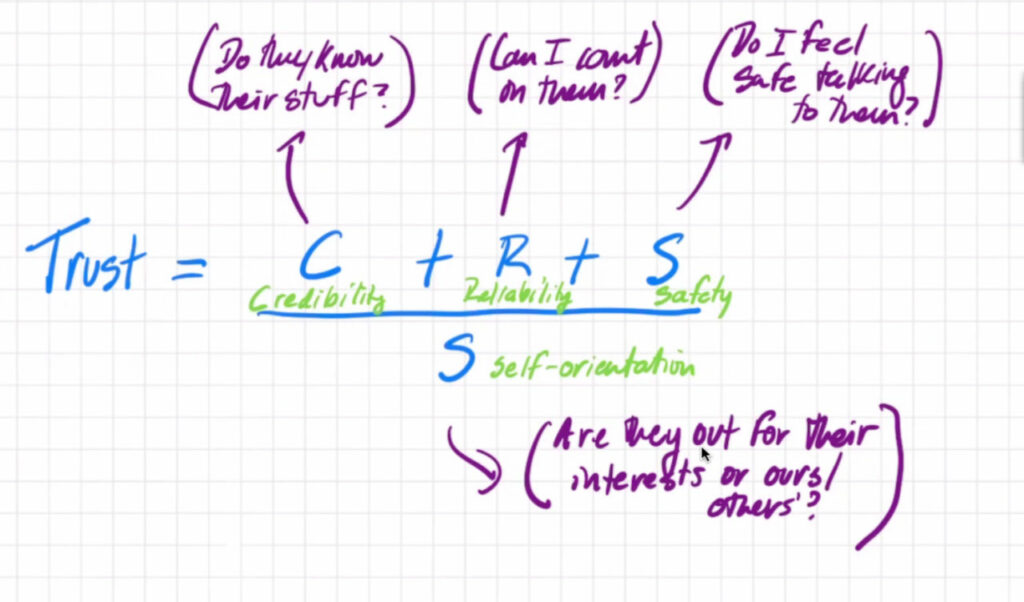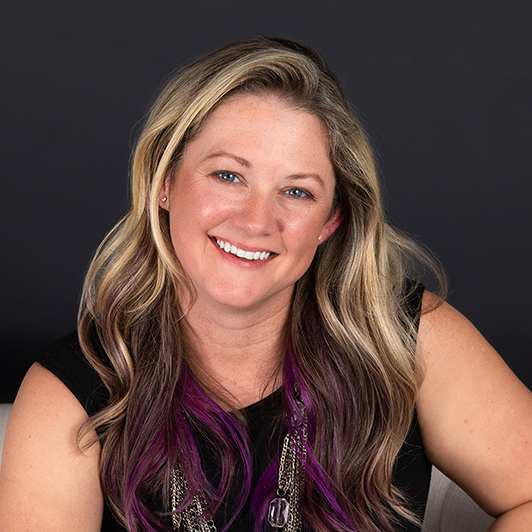
Your First 90 Days as a Product Leader
You’ve heard it before: “Do nothing for the first 90 days in a new leadership role. Focus your time on listening, relationship building, and assessing.” Sage advice, right?
Maybe 10 years ago. The landscape has changed significantly since then. As my former colleague jokingly said, “You have 30 days of listening and 60 days of making shit up.”
All jokes aside, leaders no longer have the luxury of sitting around for 90 days before taking action. 90 days is eons in today’s product development world. New leaders must show value in as little as 30 days and often with less information than they are comfortable with.
So, what’s a product leader to do?
As a consultant who frequently steps into new leadership roles, I’ve learned that you can’t just make it up as you go. While you do have to be flexible to adapt, having a framework or set of principles is immensely useful.
You have to go into your 90 days knowing there are likely landmines buried within the product or the culture/operating model that surrounds it. You want to unearth those landmines as quickly as possible. That way, you can change them while you have the mandate to do so. Or if things are really bad, you can let the company know they’ve misrepresented the opportunity and move on.
First: Assess the Current State
Your first task is to listen and learn. You want to understand the business and the product, meet the stakeholders, understand customer insights and assess the team. Start with the people and move on to process and product.
Connect with 10 people in and outside of your direct team in your first 10 days. Need help finding 10 people? Start with three and ask them who to talk to next, and so on until you hit 10.
Your goal here is to understand the lay of the land and build a stakeholder map for those surrounding your team. You’re also trying to gain a deeper understanding of the talent on your team. This is the time to set up one-on-ones with your direct team members and just listen.
On that note, be sure to sit down with your leadership team too so you can understand their expectations of your role and the timing associated with their goals.
Next up, process. Assess how things are running. Start from the beginning when an idea or feature is suggested and follow that feature or idea through your processes. As you do so, look for bottlenecks, silos, and breakdowns. Take note of what’s working and what needs further review.
A more tactical task at this point is to ensure that feedback loops between functions are in place. These processes allow you to exchange information and insights. With the feedback loops, you can more quickly identify and resolve issues. And you will find issues.
Then, product. Of course, you need to come up to speed on your product. That’s a no-brainer. But to succeed, you need to go a level deeper. Use the conversations you had with your people as an opportunity also to get their perspective on the product and the progress. Review baseline artifacts like vision, strategy, and roadmap. That is, if they exist. If they don’t, well, there is another item on your to-do list.
Get a solid handle on how your product is aligned with the broader company goals. That way, you can understand the gaps in what’s happening now and the strategic objectives so you can identify quick wins and more effectively prioritize them.
Next: Diagnose and Identify Priorities
At this point you likely have a long list of action points, projects, and To Dos (and probably a few WTFs). Now we dive into diagnose and prioritize. It’s critical that you start to identify areas of opportunity and high-impact efforts you can execute against right away.
Let’s start with evaluating current initiatives. Go back to the ongoing projects list and evaluate how they align with business goals. Typically there are projects in there that can be shelved (though be aware of political landmines) and others that can be accelerated. Using an evaluation framework gives you support in tough conversations and combats the pet project syndrome. Choose a framework that helps balance or address the following:
- Customer-Centricity: Prioritize work that delivers the highest value to customers.
- Alignment with Business Goals: Ensure that your priorities support the company’s larger objectives.
You can include other elements to your prioritization framework to address scenarios specific to your environment (maybe there are board or CEO mandates, M&A considerations/targets, partnership, or other internal factors).
Regardless of what you use, when at all possible leverage data to inform decision-making, but don’t be afraid to rely on intuition where needed.
Do the same prioritization for the things on your To Do/action list too.
Next, identify strategic gaps. Look at your future roadmap and organizational goals to identify any gaps in customer experience, internal capabilities and strategy that could impact long-term growth and note any gaps or things that don’t make sense. If it’s not helping your move towards your strategic goals, it goes in the backlog. (It may not be a bad idea, just not a “now” idea,)
Now, mark the quick wins. Using your prioritized list consider the following:
Balance quick wins and long-term impact: Consider how you can show early results while laying the foundation for long-term success.
Time to value or effort: High-value things may be hard but that doesn’t mean you don’t do them soon. Elevate those that will contribute the most to the strategic goals of your organization, and break them down into actionable steps to encourage momentum.
A Word on Trust
Trust is absolutely critical to success during your first 90 days as a product leader (and beyond). I’m a firm believer that trust is earned and not given. However, if a company hires you, I’d assume that at least a cursory level of trust was developed during the hiring process.
Beyond that, it’s on you as the new leader to continue to build that trust over time. You might walk into the organization with a cup full of trust. But you’re going to need buckets to succeed. Those have to be earned over time by maintaining relationships and visibility across your organization. In other words, you should be given the authority to make changes and decisions early on. This is your proving ground where you’ll continue to prove yourself worthy of trust (including admitting where you’re wrong and pivoting accordingly).
I like to think about building trust through the Trust Equation, pictured below. Here’s a quick primer:
- Credibility: Related to the words we speak. (“Do they know their stuff?”)
- Reliability: Related to the actions we take. (“Can I count on them?”)
- Intimacy or Safety: Referring to the safety or security we feel when we entrust someone with something. (“Do I feel safe talking to them?”
- Self-orientation: Referring to someone’s focus, meaning on themselves, or the other person. (“Are they out for their interests or ours or others’?”)
Now take a look at the equation below:

It makes sense, of course, that credibility, reliability, and intimacy/safety all add up when building trust. According to Trusted Advisor Associates (the founders of the Trust Equation), the higher the value of the factors in the numerator, the greater the value of trust. But there’s one aspect many people skip over when studying the Trust Equation, the greater the value of the denominator, or self-orientation, the lower the value of trust.
The more focused you appear on your own interests, the less your team and stakeholders will trust you even if you double down on credibility, reliability, and intimacy/security. So, why am I telling you this? Because as you work through your first 90 days as a product leader, it’s imperative that you demonstrate an interest in and respect of your teams and organizations’ interests if you want to build trust (which you do if you want to succeed).
So, here are my biggest tips for demonstrating that you’re committed to the interests of your team and stakeholders:
- Don’t just assume you can clear the decks and start fresh. Take into consideration what has already happened and what’s in place. If you need to change something, understand it first and communicate the rationale behind the change you’re proposing.
- Avoid dismissing leadership. Who already exists as an authority and advisor in your organization? Failing to get their buy-in could hurt your efforts in the long-run.
- Don’t commit to dates for deliverables too fast. Understand the scope and complexities that may be involved before setting deadlines. Focus on delivering an outcome versus a specific feature. Otherwise, you risk coming up short and committing your team to things they can’t deliver. And that’s no way to earn trust.
Last: Define and Act
Build your plan and get buy in
Now, take your prioritized project list, high impact To Dos, and build out your plan. Set milestones (date based at this point as we’re working to build trust and credibility) and then sit down with your leadership team to discuss. Inevitably there are opinions on what you’re laying out but leading with data and being able to connect your efforts to how they’ll drive value for an organization will help support your conversation.
Once you have stakeholder buy-in, align the team and go. Fill your team in on the plan and ensure they are aligned around core objectives and product priorities. This could involve adjusting workflows, communication, or goal-setting frameworks (like OKRs).
Make it visible
Like I said, one of the biggest things you’re trying to do as a product leader in your first 90 days is creating trust and establishing credibility. And the best way to do this is to make your efforts visible while building relationships.
Start by communicating effectively. Keep communication lines open with your team and stakeholders. That looks like:
- Regular updates and transparency (which also fosters a collaborative environment).
- Continuously seeking feedback from your team, users, and stakeholders to refine your approach and make informed decisions.
- Being prepared to adjust your plans based on new information and changing circumstances. Flexibility is key to navigating the dynamic environment of product management.
And here’s something you might already be thinking about: leading and building trust in a virtual world. It’s certainly a challenging dynamic given that many of us are working in remote-first environments. Face time is now all digital which mutes your ability to read body language. Plus, you miss out on those serendipitous watercooler moments. And being visible takes more effort. Your boss and leaders can’t see you moving about the office and meeting with folks. Your team can’t just walk into your office, see your whiteboard, and ask questions.
So, be intentional in showing your progress. Make sure your key stakeholders like your CEO and VPs are in lock-step with your leadership. That means building and maintaining visibility. Here’s what I mean:
Building visibility
- Update: This is where consistency really matters. Even if it feels like you’re repeating yourself, prioritize giving regular updates on you and your team’s progress, achievements, and needs. It helps to put these updates on a schedule for your most important contacts.
- Showcase: Connect the dots for your team, stakeholders, and others by showcasing how your progress is impacting the organization. You can do this verbally, but it’s also helpful to illustrate your point through visuals like presentations and reports.
- Connect and reconnect: Stay proactive to build your presence and a rapport with others. As you reach out to your key contacts, don’t just share updates. Be sure to address concerns, highlight barriers they can help you break down, and offer support as well.
Maintaining visibility
- Gather: Conduct regular feedback sessions with your team and stakeholders to understand what’s working and what can be improved.
- Adapt: Take the feedback you receive to adjust and refine your strategies and techniques. Showing you’re receptive and responsive to feedback goes a long way to building trust.
- Celebrate: As you champion your team’s achievements across the organization, take time to celebrate them as a unit to create a sense of community.
Now that you have your guide for your first 90 days, I want to leave you with a couple of tools and insights. First, check out David Theil’s expectation management matrix. This tool is useful for establishing credibility and aligning teams. Next, Mural’s stakeholder mapping guide can help you identify, understand, and engage with your key contacts.
Finally, I want to emphasize the value of continuous learning and retrospecting the first 90 days at both the personal and leadership level. This looks like regularly asking for feedback, applying best practices, and experimenting with new concepts. It means reviewing outcomes, seeing what worked, and what can be improved upon for the future. That’s the kind of deep work that will separate you from the rest during your first 90 days and beyond. And while it takes extra effort, it’s an investment with a real return that you’ll see grow as you and your team become more agile and aligned.
If you’re working with product concepts, why not validate them before you build? It’ll save you time and money through short, iterative cycles of user research, rapid prototyping, and collaborative ideation. At 3Pillar, we’ve built a 6-week proven product validation process so you can ensure you’re building a product that delivers results.
About the author




